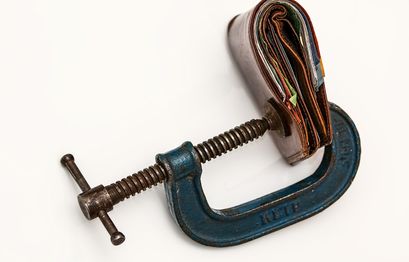Facing significant financial difficulty can be stressful, frustrating, and depressing. Many people who face financial difficulty do so out of no fault of their own. It is possible you suffered a serious illness or injury that left you unable to work, causing medical bills to accumulate.
A divorce, a sudden job loss, or any unexpected life change could have a negative impact on your finances. One option to get yourself back on track is to file bankruptcy, but there are things you need to understand before you file.
What happens when you file
When your attorney files for bankruptcy, you are provided an immediate stay. This means creditors may no longer contact you about your debt, and they must cease all debt collection attempts. They cannot seize your bank account or garnish your wages. They also cannot put liens on your car or home. This can relieve some of the stress as you are not dealing with aggressive debt collectors calling your home or work constantly.
What happens to my property
Whether you can keep your property will depend on the type of bankruptcy you file. If you file Chapter 7, also known as a liquidation bankruptcy, you may have to sell some of your assets to pay at least a portion of what you owe. There are certain assets that are protected such as retirement accounts, your home, and your car.
In a Chapter 13 bankruptcy, your property is protected as the court will simply reorganize your debts so you can pay them off. The payment plan lasts between three and five years. If you don’t comply with the plan set up by the courts, creditors can begin collection proceedings once again.
What if I am behind in my mortgage?
If you are behind in your mortgage, Chapter 13 bankruptcy may be able to help. Even if your mortgage company has filed foreclosure documents, the stay issued by Chapter 13 bankruptcy will keep the foreclosure from moving forward. The trustee can include the amount you are behind in your payment plan, but you will need to make payments regularly to the mortgage company in addition to the court-ordered plan.
As long as your payment plan is approved and you make the payments as promised, the stay remains in place. However, you will need to continue paying your mortgage. If you file Chapter 7, you can include your mortgage in the debts you cannot pay, but you will have to forfeit your house. If you want to keep your home and intend to file Chapter 7, you will need to be sure your mortgage payments are up-to-date before you file.
What if I am behind in my car payments?
If you are behind in your car payments and plan to file Chapter 7, you will probably need to forfeit your car. Chapter 7 will temporarily stop the bank from repossessing your car due to the automatic stay. If you are behind, however, the bank can ask the court to lift the stay and, if you have little equity in your vehicle, the court will probably agree.
If you plan to file Chapter 13, like your mortgage, you may be able to include what you are behind in your repayment plan. You may also be able to reduce the car loan if the amount you owe is significantly higher than the value of the car. The bottom line is that if you want to keep your car, you will have to pay for it even if you file for bankruptcy.
If you are facing financial difficulties, visit this page to learn more about frequently asked questions regarding bankruptcy. You may be able to get a fresh financial start, reducing stress and allowing you to live without constant calls from aggressive creditors.











